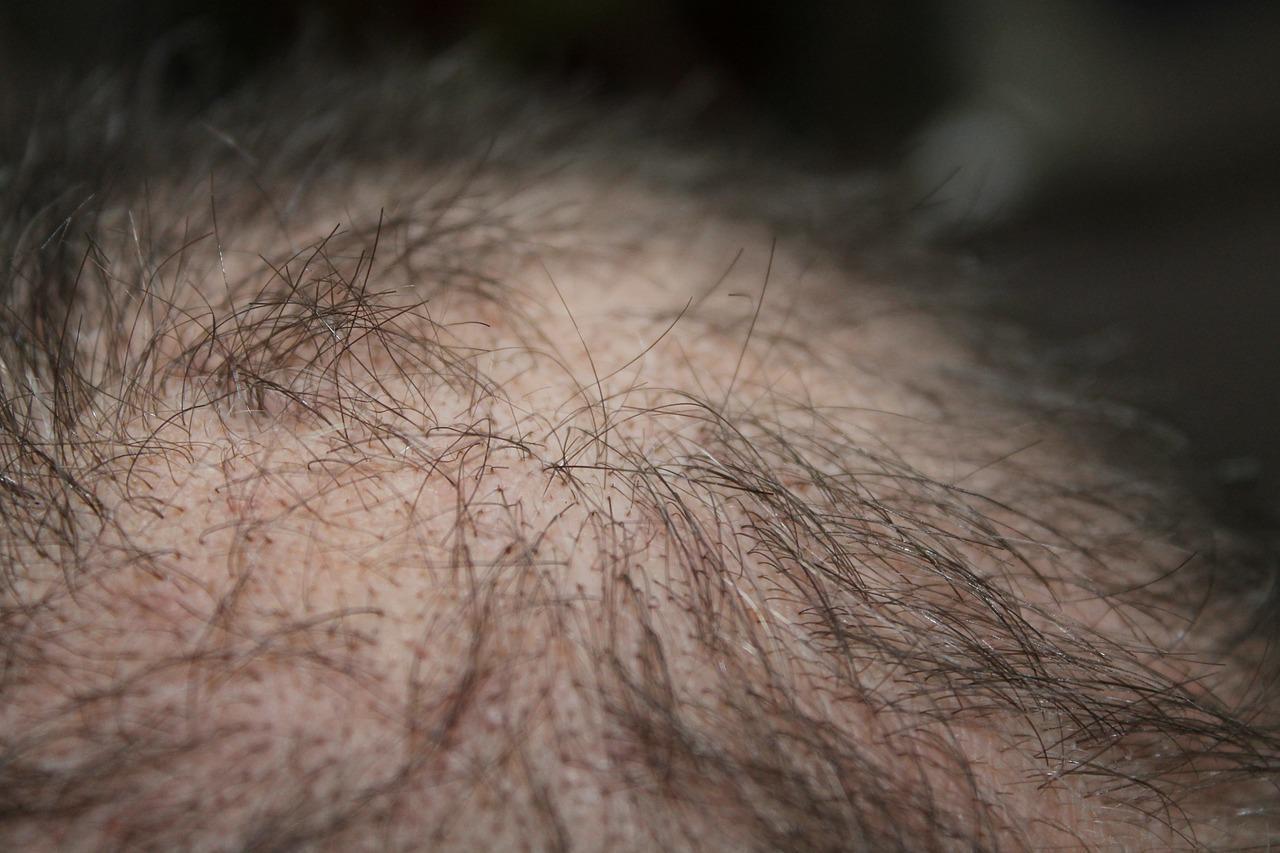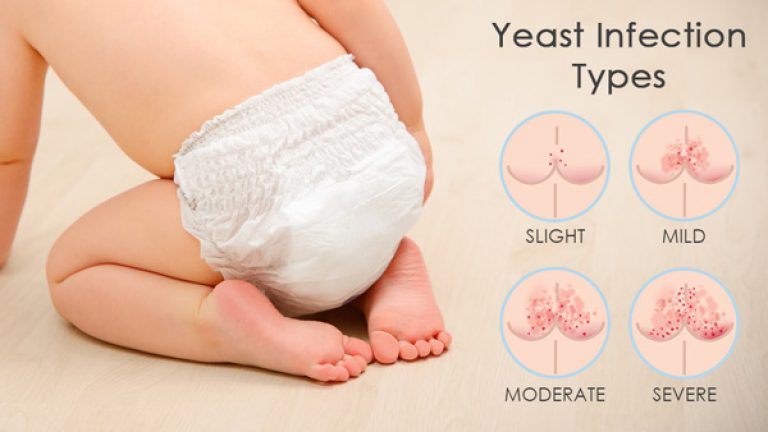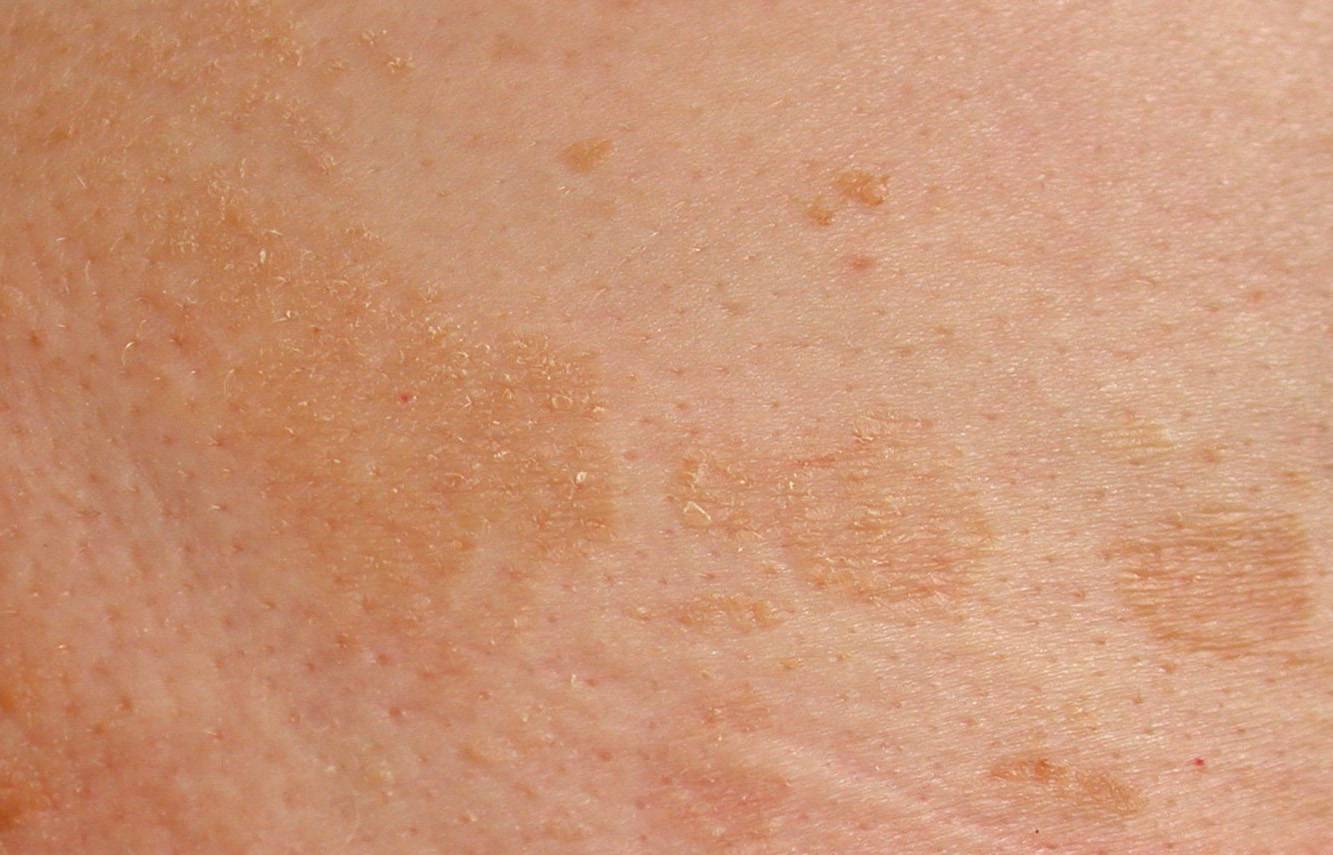Yeast Infection Skin Rash Photos: Symptoms, Treatment, and More
Discover the symptoms of a yeast infection skin rash, what it looks like, and effective treatment options. Get insights from medical professionals on managing this common skin condition.
Understanding Yeast Infection Skin Rash
Yeast infections are a common skin condition that can cause a distinctive rash. These rashes are often accompanied by symptoms like itching, burning, and discomfort. Understanding the signs and symptoms of a yeast infection skin rash is crucial for proper treatment and management.
Symptoms of a Yeast Infection Skin Rash
The main symptoms of a yeast infection skin rash include:
- Red, moist, and irritated skin
- Itching or burning sensation
- Tiny blisters or scales on the affected area
- Reddish-brown discoloration
- Cracked or peeling skin
These symptoms can appear in various parts of the body, including the groin, armpits, under the breasts, and between the toes. It’s important to seek medical attention if you suspect a yeast infection skin rash, as prompt treatment can help alleviate the symptoms and prevent the infection from spreading.

What Does a Yeast Infection Skin Rash Look Like?
A yeast infection skin rash typically appears as a red, moist, and irritated area of the skin. The rash may have a distinctive appearance, with small blisters, scales, or a reddish-brown discoloration. In some cases, the affected skin may also appear cracked or peeling. The rash is often accompanied by a burning or itching sensation.
Causes of Yeast Infection Skin Rashes
Yeast infections are caused by an overgrowth of a fungus called Candida. This fungus is naturally present on the skin, but an imbalance in the body’s pH levels or a weakened immune system can lead to an overgrowth, resulting in a skin rash. Factors that can contribute to the development of a yeast infection skin rash include:
- Diabetes
- Antibiotic use
- Pregnancy
- Weakened immune system
- Tight or moist clothing
- Poor hygiene
Treating Yeast Infection Skin Rashes
Treatment for a yeast infection skin rash typically involves the use of antifungal medications, either topical creams or oral medications. Over-the-counter antifungal creams containing ingredients like clotrimazole or miconazole can often effectively treat mild cases. For more severe or persistent infections, a healthcare provider may prescribe stronger antifungal medications.

In addition to medication, it’s important to practice good hygiene and keep the affected area clean and dry. Wearing loose, breathable clothing and avoiding tight-fitting garments can also help prevent the spread of the infection.
Preventing Yeast Infection Skin Rashes
To help prevent the development of a yeast infection skin rash, it’s important to maintain good hygiene, manage any underlying medical conditions like diabetes, and avoid activities that can promote the growth of Candida fungus. Some preventative measures include:
- Practicing good personal hygiene, such as keeping the skin clean and dry
- Wearing loose, breathable clothing to reduce moisture and friction
- Avoiding the use of harsh soaps or fragrances that can irritate the skin
- Maintaining a healthy diet and exercising regularly to support a strong immune system
- Seeking prompt treatment for any signs of a yeast infection skin rash
When to Seek Medical Attention
If you suspect you have a yeast infection skin rash, it’s important to seek medical attention, especially if the symptoms are severe or do not improve with over-the-counter treatments. A healthcare provider can properly diagnose the condition and prescribe the appropriate medication or treatment plan.

It’s also important to seek medical attention if the rash is accompanied by other concerning symptoms, such as fever, severe pain, or signs of secondary bacterial infection. Early diagnosis and treatment can help prevent the infection from spreading or worsening.
By understanding the symptoms, causes, and treatment options for yeast infection skin rashes, you can take proactive steps to manage this common skin condition and maintain healthy, comfortable skin.
Diabetes and Skin Complications | ADA
Diabetes Complications
Skin—our largest organ—can experience complications from diabetes, too.
Diabetes can affect every part of the body, including the skin.
In fact, skin problems are sometimes the first sign that a person has diabetes.
Some are cause for concern, while others may simply be a cosmetic issue (harmless). Regardless, you should keep an eye out for changes in your skin and talk to your doctor about any concerns you have—it’s better to be safe than sorry. Luckily, most skin conditions can be prevented or easily treated if caught early.
Some of these problems are skin conditions anyone can have, but people with diabetes get more easily. These include bacterial infections, fungal infections, and itching. Other skin problems happen mostly, or only, to people with diabetes. These include diabetic dermopathy, necrobiosis lipoidica diabeticorum, diabetic blisters, and eruptive xanthomatosis. Expand the items below to learn more about each skin condition and discover helpful skin care tips.
General skin conditions
<h4>Bacterial infections</h4>
Several kinds of bacterial infections occur in people with diabetes:
- Styes (infections of the glands of the eyelid)
- Boils
- Folliculitis (infections of the hair follicles)
- Carbuncles (deep infections of the skin and the tissue underneath)
- Infections around the nails
Inflamed tissues are usually hot, swollen, red, and painful. Several different organisms can cause infections, the most common being Staphylococcus bacteria, also called staph.
Bacterial infections were once life threatening, especially for people with diabetes. Today, death is rare, thanks to antibiotics and better methods of blood glucose (blood sugar) control.
But even today, people with diabetes have more bacterial infections than other people do. Doctors believe people with diabetes can reduce their chances of these infections by practicing good skin care.
If you think you have a bacterial infection, see your doctor.
<h4>Fungal infections</h4>
The culprit in fungal infections of people with diabetes is often Candida albicans. This yeast-like fungus can create itchy rashes of moist, red areas surrounded by tiny blisters and scales. These infections often occur in warm, moist folds of the skin. Problem areas are under the breasts, around the nails, between fingers and toes, in the corners of the mouth, under the foreskin (in uncircumcised men), and in the armpits and groin.
Common fungal infections include jock itch, athlete’s foot, ringworm (a ring-shaped itchy patch), and vaginal infection that causes itching.
If you think you have a yeast or fungal infection, call your doctor.
<h4>Itching</h4>
Localized itching is often caused by diabetes. It can be caused by a yeast infection, dry skin, or poor circulation. When poor circulation is the cause of itching, the itchiest areas may be the lower parts of the legs.
You may be able to treat itching yourself. Limit how often you bathe, particularly when the humidity is low. Use mild soap with moisturizer and apply skin cream after bathing.
Good skin care
There are several things you can do to prevent skin problems:
- Keep your diabetes well managed. People with high glucose levels tend to have dry skin and less ability to fend off harmful bacteria. Both conditions increase the risk of infection.
- Keep skin clean and dry.
- Avoid very hot baths and showers. If your skin is dry, don’t use bubble baths. Moisturizing soaps may help. Afterward, use a standard skin lotion, but don’t put lotions between toes. The extra moisture there can encourage fungus to grow.
- Prevent dry skin. Scratching dry or itchy skin can open it up and allow infection to set in. Moisturize your skin to prevent chapping, especially in cold or windy weather.
- Treat cuts right away. Wash minor cuts with soap and water.
 Only use an antibiotic cream or ointment if your doctor says it’s okay. Cover minor cuts with sterile gauze. See a doctor right away if you get a major cut, burn, or infection.
Only use an antibiotic cream or ointment if your doctor says it’s okay. Cover minor cuts with sterile gauze. See a doctor right away if you get a major cut, burn, or infection. - During cold, dry months, keep your home more humid. Bathe less during this weather, if possible.
- Use mild shampoos.
- Do not use feminine hygiene sprays.
- See a dermatologist (skin doctor) about skin problems if you are not able to solve them yourself.
- Take good care of your feet. Check them every day for sores and cuts. Wear broad, flat shoes that fit well. Check your shoes for foreign objects before putting them on.
- Talk to your doctor or dermatologist if you are not able to solve a skin problem yourself.
Diabetes-related skin conditions
<h4>Acanthosis nigricans</h4>
Acanthosis nigricans is a condition in which tan or brown raised areas appear on the sides of the neck, armpits, and groin. Sometimes they also occur on the hands, elbows, and knees.
Acanthosis nigricans usually strikes people who are very overweight. The best treatment is to lose weight. Some creams can help the spots look better.
<h4>Diabetic dermopathy</h4>
Diabetes can cause changes in the small blood vessels. These changes can cause skin problems called diabetic dermopathy.
Dermopathy often looks like light brown, scaly patches. These patches may be oval or circular. Some people mistake them for age spots. This disorder most often occurs on the front of both legs. But the legs may not be affected to the same degree. The patches do not hurt, open up, or itch.
Dermopathy is harmless and doesn’t need to be treated.
<h4>Necrobiosis lipoidica diabeticorum</h4>
Another disease that may be caused by changes in the blood vessels is necrobiosis lipoidica diabeticorum (NLD). NLD causes spots similar to diabetic dermopathy, but they are fewer, larger, and deeper.
NLD often starts as a dull, red, raised area. After a while, it looks like a shiny scar with a violet border. The blood vessels under the skin may become easier to see. Sometimes NLD is itchy and painful. Sometimes the spots crack open.
After a while, it looks like a shiny scar with a violet border. The blood vessels under the skin may become easier to see. Sometimes NLD is itchy and painful. Sometimes the spots crack open.
NLD is a rare condition. Adult women are the most likely to get it. As long as the sores do not break open, you do not need to have it treated. But if you get open sores, see your doctor for treatment.
<h4>Allergic reactions</h4>
Allergic skin reactions can occur in response to medicines, such as insulin or diabetes pills. You should see your doctor if you think you are having a reaction to a medicine. Be on the lookout for rashes, depressions, or bumps at the sites where you inject insulin.
<h4>Diabetic blisters (bullosis diabeticorum)</h4>
Rarely, people with diabetes erupt in blisters. Diabetic blisters can occur on the backs of fingers, hands, toes, feet, and sometimes on legs or forearms. These sores look like burn blisters and often occur in people who have diabetic neuropathy. They are sometimes large, but they are painless and have no redness around them. They heal by themselves, usually without scars, in about three weeks. The only treatment is to bring blood glucose levels under control.
They are sometimes large, but they are painless and have no redness around them. They heal by themselves, usually without scars, in about three weeks. The only treatment is to bring blood glucose levels under control.
<h4>Eruptive xanthomatosis</h4>
Eruptive xanthomatosis is another condition caused by diabetes that’s out of control. It consists of firm, yellow, pea-like enlargements in the skin. Each bump has a red halo and may itch. This condition occurs most often on the backs of hands, feet, arms, legs, and buttocks.
The disorder usually occurs in young men with type 1 diabetes. The person often has high levels of cholesterol and fat in the blood. Like diabetic blisters, these bumps disappear when diabetes control is restored.
<h4>Digital sclerosis</h4>
Sometimes, people with diabetes develop tight, thick, waxy skin on the backs of their hands. Sometimes skin on the toes and forehead also becomes thick. The finger joints become stiff and can no longer move the way they should. Rarely, knees, ankles, or elbows also get stiff.
Rarely, knees, ankles, or elbows also get stiff.
This condition happens to about one third of people who have type 1 diabetes. The only treatment is to bring blood glucose levels under control.
<h4>Disseminated granuloma annulare</h4>
In disseminated granuloma annulare, the person has sharply defined ring- or arc-shaped raised areas on the skin. These rashes occur most often on parts of the body far from the torso (for example, the fingers or ears). But sometimes the raised areas occur on the torso. They can be red, red-brown, or skin-colored.
See your doctor if you get rashes like this. There are medications that can help clear up this condition.
Yeast Dermatitis in Dogs: Signs and Treatment | Germantown Parkway Animal Hospital
Is your dog suffering from irritated, itchy, or flakey skin? The problem could be yeast dermatitis, a condition caused by the abnormal overgrowth of yeast naturally found on your dog’s skin. Here, our Cordova vets explain the causes, symptoms, and how yeast dermatitis in dogs can be treated.
Yeast on Dog’s Skin
Dogs can develop yeast infections on their skin or in their ears when there is an abnormal overproduction of the yeast that is normally found on your pet’s skin. Yeast is a natural spore-producing fungus on a dog’s body that doesn’t generally cause illness unless there is too much of it.
Yeast infections can also be called “Malassezia dermatitis, or Yeast Dermatitis” and it usually occurs in a dog’s ears, between their paw pads, or in their skin folds. This condition can make the affected area of your dog’s skin itchy, red, and irritated. Yeast infections in a dog’s ear can also lead to deafness if the condition goes too long without treatment.
Symptoms of Dog Skin Yeast Infections
What does yeast dermatitis look like in dogs? There are a handful of signs and symptoms that could indicate your dog has yeast dermatitis or a yeast ear infection including:
- Red irritated skin
- Itching and scratching
- The appearance of darkly pigmented skin
- Flaky or scaly skin
- Sores on the skin
- Musty odor
- Change in skin texture (elephant skin)
- Hair loss, bald patches
- Head tilting and shaking (ear yeast infection)
- Hearing loss (ear yeast infection)
The first symptoms your dog will likely develop include a musty odor accompanied by redness and swelling of the infected area. But these symptoms can quickly progress to the skin becoming and painful. If you notice that your dog is exhibiting any symptoms of a yeast infection call your veterinarian to schedule an appointment for your pup.
But these symptoms can quickly progress to the skin becoming and painful. If you notice that your dog is exhibiting any symptoms of a yeast infection call your veterinarian to schedule an appointment for your pup.
Causes of Yeast Dog Dermatitis & Yeast Ear Infections
Yeast, bacteria and fungi occur naturally on your dog’s skin, but under normal circumstances, they don’t lead to health issues. Nonetheless, if something causes your dog’s skin condition to change or their immune system to become less effective opportunistic yeast infections can result.
A few of the most common causes of yeast dermatitis and ear infections in dogs include:
- An underactive or overreactive immune system
- Allergens (smoke, mold, dust, dander, cleaning products, etc.)
- Foods high in sugar and carbs
- Heat and humidity
- Poor hygiene
- Trapped moisture in skin folds, ears, or paw pads
- Frequent bathing (ear yeast infections)
- Swimming (ear yeast infections)
- Trapped object in the ear, ear wax, or discharge (ear yeast infections)
- Various ear drops (ear yeast infection)
Treatments for Yeast Dermatitis in Dogs
If you believe your dog has yeast dermatitis or a yeast ear infection the first thing you should do is call your vet, the sooner their condition is addressed the faster your pooch will recover. Your veterinarian will be able to diagnose your pup’s infection by culturing or with cytology, they might also take skin and hair samples from around the infected area for additional testing.
Your veterinarian will be able to diagnose your pup’s infection by culturing or with cytology, they might also take skin and hair samples from around the infected area for additional testing.
When your dog is diagnosed with a yeast infection your vet will prescribe an antifungal medication which may include an ointment to apply to the infected area or a medicated shampoo to relieve symptoms. If your dog’s infection is more serious your vet may prescribe oral tables such as ketoconazole, fluconazole, or terbinafine.
If your dog has a yeast infection in its ear that caused deafness your pup might require total ear canal ablation surgery.
Home Remedies That May Help Prevent Yeast Dermatitis & Ear Infections in Dogs
Though yeast infections should be attended to by a veterinarian to make sure there are no secondary infections or complications, there are a few ways you can help to prevent your dog from developing yeast infections such as:
- Completely drying your pup after a bath or playing in the water
- Cleaning your dog’s ears of dirt regularly with a clean cloth or cotton ball
- Feed your pooch a healthy diet full of protein and other nutrients
- Brush your dog often as part of their regular hygiene routine to clear away dead skin and dirt
Note: The advice provided in this post is intended for informational purposes and does not constitute medical advice regarding pets. For an accurate diagnosis of your pet’s condition, please make an appointment with your vet.
For an accurate diagnosis of your pet’s condition, please make an appointment with your vet.
If your dog is suffering from symptoms of yeast dermatitis contact our Cordova vets right away to book an appointment for your four-legged friend. Our vets can offer effective treatments for uncomfortable skin and ear yeast infections in dogs.
Looking for a vet in Cordova and Greater Memphis area?
We’re always accepting new patients, so contact our veterinary hospital today to book your pet’s first appointment.
Contact Us
Related Articles View All
Pets, whether they are furry, feathered or scaled, have a remarkable ability to improve our sense of well-being and enhance our mental health. Today our Cordova vets share some of the numerous mental health benefits of having pets.
Planning on boarding your dog while you are away from home? If so it’s important to understand which shots your dog will need in order to be accepted into a quality dog boarding facility. Today, our Cordova vets discuss which shots your dog needs to safely stay in a boarding facility.
Today, our Cordova vets discuss which shots your dog needs to safely stay in a boarding facility.
Taking your dog to the vet for regular checkups and preventive care can provide your four-legged friend with their best shot at living a long and healthy life, but how often should you take your dog to the vet? Our Cordova vets share their recommendations.
Pet Wellness Plans are ‘bundled’ veterinary services that include the annual preventive services your pet needs, at a discounted rate, then divided into 12 easy-to-manage monthly payments. Today, our Cordova vets discuss the benefits of Wellness Plans and some things to consider.
Malassezia in dogs – treatment, photo
Currently, there are several types of yeast fungi of the genus Malassezia. More often, lesions are caused by the skin symbiont Malassezia pachydermatis. This Malassezia is present on the mucous membranes and skin of healthy dogs, and is often isolated after sampling material from the ear canals, rectum, vagina, material from the lips and from the skin of the interdigital region.
Malassezia dermatitis is not contagious, and no sex or age predisposition has been identified. As for breed predisposition, in breeds such as the French Bulldog, Basset Hound, English Bulldog, West Highland White Terrier, Shar Pei, Cocker Spaniel, Jack Russell Terrier, Dachshund, Malassezia dermatitis is more common.
Causes of malassezia in dogs
Invasion of the fungus into the superficial layers of the epidermis occurs when the microflora of the skin surface changes due to moist maceration of the skin (impregnation of tissues with liquid and their swelling), increased secretion of the sebaceous glands of the skin, increased production of earwax, trauma to the mucous membranes and skin.
Predisposing factors include bacterial skin infections, allergic reactions, endocrine disorders.
Clinical symptoms of Malassezia dermatitis in dogs
Most often, lesions appear in the ears (otitis externa), muzzle, lips, on the ventral folds of the forelimbs, in the areas between the fingers, on the medial surface of the thigh, in the folded areas, in the area of the anus and around it. Areas with lesions can be widespread (affecting large areas of the body), multifocal, and localized. Clinical manifestations of Malassezia dermatitis include erythema (severe reddening of the skin), yellow or gray scales on the skin or hairline, mild to severe itching, and an unpleasant odor is often present. The chronic course of the pathology leads to hyperpigmentation and lichenification (lichenification) of the skin, that is, a transformation of the skin occurs, which is characterized by its roughness, increased pattern, and thickening.
Areas with lesions can be widespread (affecting large areas of the body), multifocal, and localized. Clinical manifestations of Malassezia dermatitis include erythema (severe reddening of the skin), yellow or gray scales on the skin or hairline, mild to severe itching, and an unpleasant odor is often present. The chronic course of the pathology leads to hyperpigmentation and lichenification (lichenification) of the skin, that is, a transformation of the skin occurs, which is characterized by its roughness, increased pattern, and thickening.
In the photo: Hyperpigmentation, lichenification of the skin in a German Shepherd dog with atopic dermatitis complicated by Malassezia fingers. Malassezia has been shown to lead to paronychia (inflammation of the nail fold) and can cause brown nails in dogs with atopic dermatitis.
Diagnosis of mallasesia
Since the clinical signs of malassezia dermatitis are non-specific and characteristic of other dermatological disorders, additional studies are required. Most often, differential diagnosis is carried out from parasitic diseases (sarcoptic mange in dogs, demodicosis, cheiletiosis, etc.), bacterial infections, neoplasms, and allergies. All these diseases can occur in parallel with dermatitis caused by the yeast fungus Malassezia.
Most often, differential diagnosis is carried out from parasitic diseases (sarcoptic mange in dogs, demodicosis, cheiletiosis, etc.), bacterial infections, neoplasms, and allergies. All these diseases can occur in parallel with dermatitis caused by the yeast fungus Malassezia.
Diagnosis is based on clinical symptoms, cytology, skin scrapings, native swabs, smears-prints. If necessary, cultural studies for fungal flora, biopsy are carried out.
Treatment of malassezia in dogs
Treatment of diseases predisposing to the occurrence of malassezia dermatitis is essential. With concomitant bacterial infections, first of all, appropriate antibiotic therapy (systemic or local) is important. If necessary, short-acting corticosteroids in an anti-inflammatory dose are used to relieve the symptoms of an allergic reaction.
Both systemic and topical treatments are used to kill the yeast culture. Apply creams, shampoos containing antimycotic components. Systemic treatment is of great importance for pronounced clinical signs, generalized and untreated dermatitis. The duration of treatment is 3 weeks or more, depending on the severity of skin lesions, concomitant diseases and response to therapeutic treatment. Timely access to a specialist allows you to save the animal from discomforting symptoms and speed up the recovery process.
The duration of treatment is 3 weeks or more, depending on the severity of skin lesions, concomitant diseases and response to therapeutic treatment. Timely access to a specialist allows you to save the animal from discomforting symptoms and speed up the recovery process.
Author of the article:
veterinary therapist, dermatologist
Mezerina Irina Sergeevna
Clinical case of treatment of malassezia in a Jack Russell Terrier
A young male Jack Russell Terrier came to see a therapist and with a complaint of itching of the left ear . The owners had no complaints about their general well-being.
On examination, the skin of the auricle was hyperemic, edematous. Easily injured while cleaning. There were multiple scratch marks.
Before treatment
Microscopy of ear scrapings revealed Malassezia fungus, as well as cocci bacteria.
At the reception, the owners were shown how to properly wash the auricle, and were given recommendations on the treatment with broad-spectrum veterinary ear drops.
At the follow-up examination after 7 days, it became clear that the owners approached the fulfillment of the prescriptions very responsibly, because the pet’s itching no longer bothered, and the redness and swelling of the skin of the auricle practically disappeared.
After Treatment
Diabetes Skin Conditions – Phoenix Center
High blood sugar levels – with diabetes or before diagnosis – can lead to several skin problems.
Causes of skin problems associated with diabetes
Skin problems affect up to 30% of people with diabetes . Hyperglycemia is associated with many complications, both microvascular and macrovascular:
- Microvascular complications are associated with very small blood vessels in the body. Changes in small blood vessels can affect the eyes and kidneys.
- Macrovascular complications refer to damage to large blood vessels, such as the arteries that carry blood away from the heart.

Approximately half of all people with diabetes develop some form of neuropathy or nerve damage . Neuropathy can affect skin healing.
Diabetic foot wounds are probably the most common problems that can be associated with poor blood flow and diabetic nerve disease. Poor circulation can also cause itchy skin . Hyperglycemia can lead to dry skin due to fluid imbalance. This happens when the body’s water is used to flush out excess glucose instead of being used to keep the skin hydrated.
Skin symptoms to look out for
If you have diabetes, watch out for the following skin symptoms:
- Dry skin: If you have abnormally dry skin, you may have a condition called xerosis.
- Rash, redness
- Blisters
- Discoloration of the skin
- Itching
Bacterial and fungal infections
High glucose levels can put you at risk for infections.
The following are infections that people with diabetes may experience:
- Boils : A boil is a pus-filled bump on the skin that looks like a large painful pimple. A group of boils located close to each other is called a carbuncle.
- Barley : These often painful lesions in the eyelash follicles are due to blockage of the sebaceous glands of the eyelid.
- Nail infections : A fungal infection of the toenails, such as onychomycosis, can cause discoloration, thickening, or cracking of the toenails.
- Athlete’s foot : not only in athletes, a fungal infection can cause cracked, itchy, and flaky skin between the toes and on the bottom of the feet. People with diabetes are definitely more prone to foot fungus.
- Itchy skin and vaginal infection : Yeast infections are due to overgrowth of natural yeasts. These infections can cause itching, redness, rashes, and small blisters.
- Ringworm : This fungal infection of the skin can be itchy and red, with a swollen border.

Other complications
- Diabetic dermopathy
Diabetic dermopathy (DD), which occurs more frequently in people over 50 years of age, is a common skin condition in diabetics. People with diabetic dermopathy may develop scaly brown spots on the front of the legs.
The spots are usually painless. Sometimes they are mistaken for age spots, they are harmless and do not need treatment.
- Diabetic lipoid necrobiosis
Lipoid diabetic necrobiosis affects the skin on the legs. However, with necrobiosis, the spots are usually larger and red in color. The affected area may be painful and itchy.
- Diabetic blisters
Bullosis diabeticorum, or diabetic blisters, may look like you’ve been burned, but are usually painless. Diabetic blisters may appear on your hands, feet, shins, or forearms. The blisters usually heal on their own without leaving a scar. Controlling your blood glucose levels will help treat blisters and prevent them from reappearing.

 Only use an antibiotic cream or ointment if your doctor says it’s okay. Cover minor cuts with sterile gauze. See a doctor right away if you get a major cut, burn, or infection.
Only use an antibiotic cream or ointment if your doctor says it’s okay. Cover minor cuts with sterile gauze. See a doctor right away if you get a major cut, burn, or infection.
